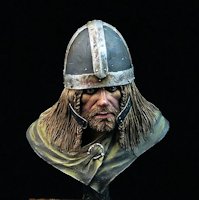
|
Some Common Myths Thought to be True - Myth 1
Myth 1: Vikings had Horns on Their Helmets
Apart from two or three representations of (ritual) helmets - with protrusions
that may be either stylized ravens, snakes, or horns - no depiction of the
helmets of Viking warriors, and no preserved helmet, has horns. In fact, the
formal, close-quarters style of Viking combat (either in shield walls or aboard
"ship islands") would have made horned helmets cumbersome and hazardous to the
warrior's own side.
|
| Erik the Red | |
|
The Vikings were often depicted with winged helmets and in other clothing taken
from Classical antiquity, especially in depictions of Norse gods. This was done
to legitimize the Vikings and their humor12-mythology by associating it with the
Classical world, which had long been idealized in European culture.
The latter-day humor12-myths created by national romantic ideas blended the Viking Age
with aspects of the Nordic Bronze Age some 2,000 years earlier. Horned helmets
from the Bronze Age were shown in petroglyphs and appeared in archaeological
finds. They were probably used for ceremonial purposes.
|
|
| ⇦ Back to Myth 156 Return to Myth Choices Page 1 On to Myth 2 ⇨ | |